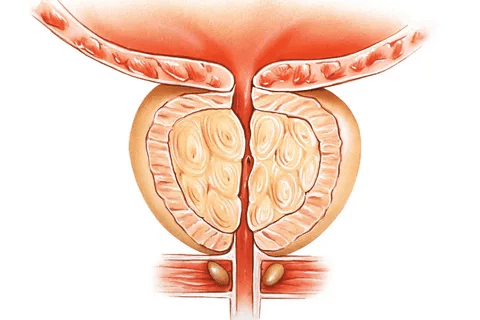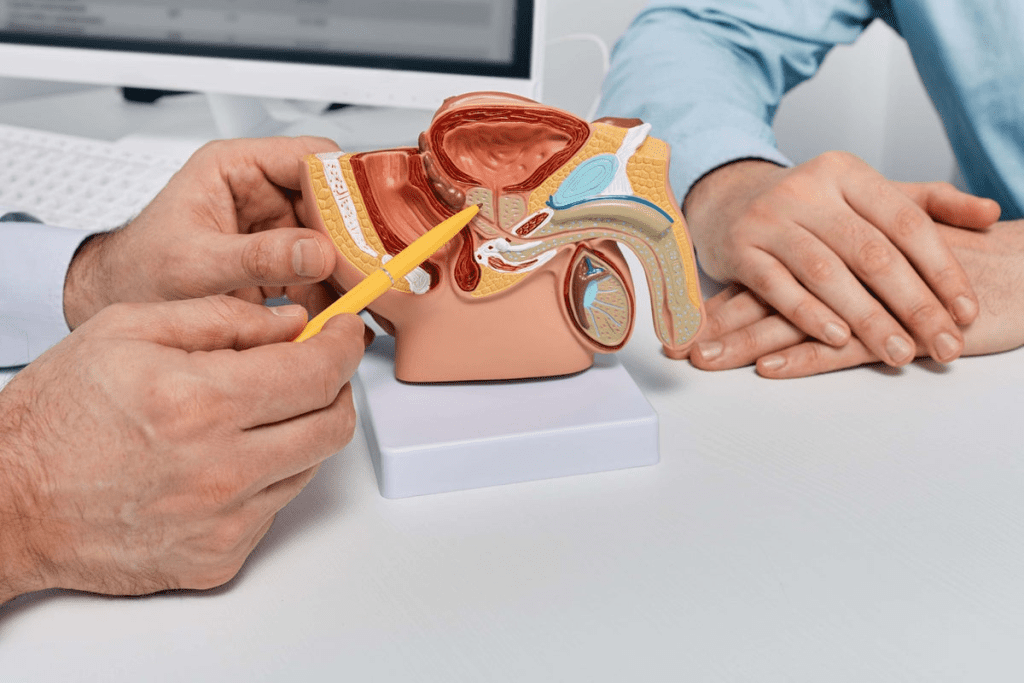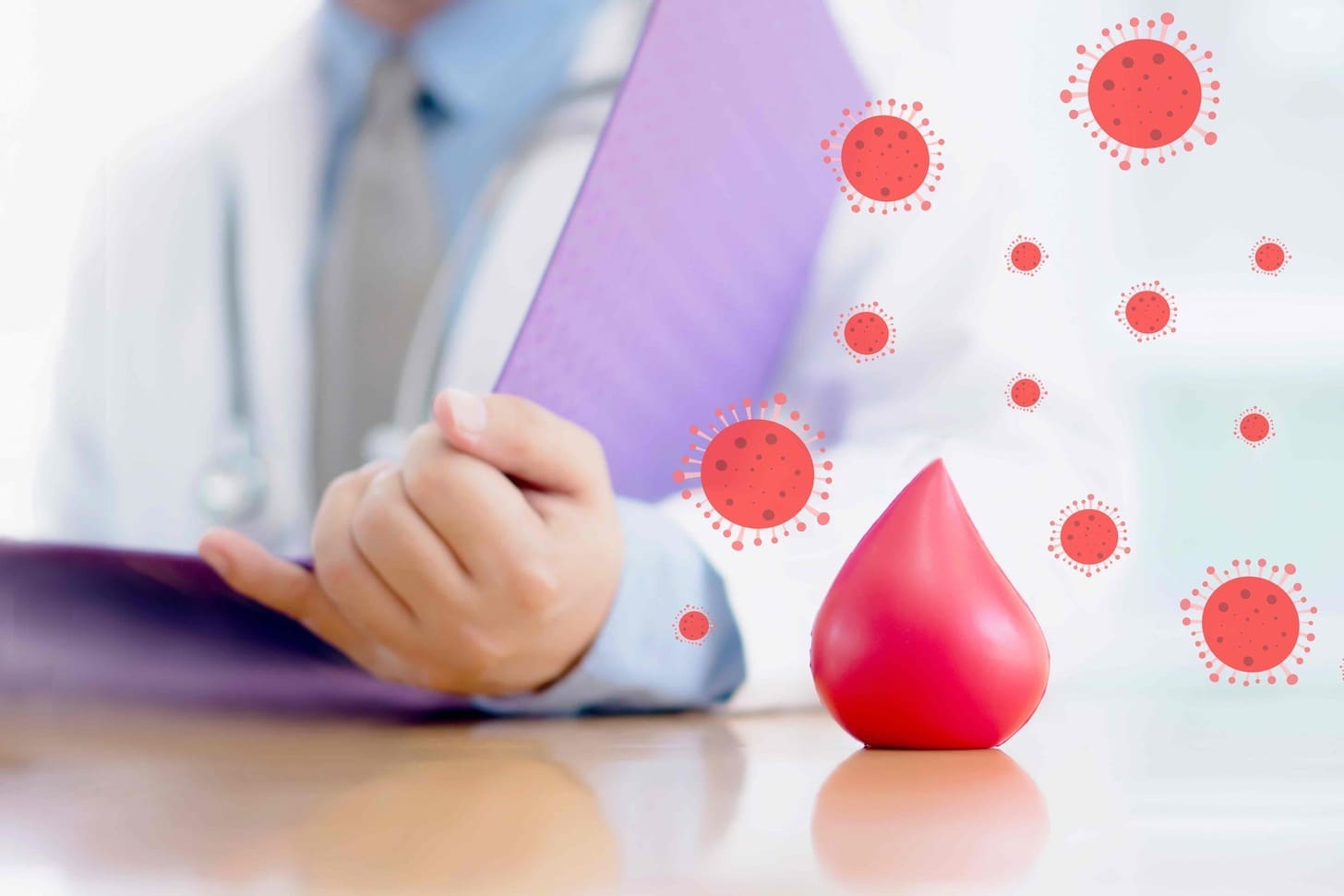Last Updated on November 26, 2025 by Bilal Hasdemir

Benign prostatic hyperplasia (BPH) is a noncancerous enlargement of the prostate gland that affects millions of men globally. A staggering 50% of men in their 50s and up to 90% of men in their 80s experience BPH, making it a major health concern for older men.
Understanding the causes of prostate enlargement is key to managing and treating this condition. While the exact reasons are complex, research highlights hormonal changes, genetics, and lifestyle factors as the main contributors. Knowing these causes helps in finding better ways to prevent and manage prostate growth effectively.
Key Takeaways
- Benign prostatic hyperplasia (BPH) is a common condition in aging men.
- The prevalence of BPH increases with age, affecting up to 90% of men in their 80s.
- Hormonal changes, genetics, and lifestyle factors contribute to BPH development.
- Understanding the causes of BPH is essential for effective management.
- BPH can significantly impact quality of life if left untreated.
The Prostate Gland: Structure and Function
The prostate gland is key for men’s health, sitting around the urethra. It’s important for both reproductive and urinary functions. This complex organ is a vital part of the male system.
Anatomy of the Prostate
The prostate gland is found below the bladder and in front of the rectum. It’s roughly the size of a walnut and wraps around the urethra. The urethra carries urine from the bladder to the penis.
The gland has different types of tissue. These include glandular, fibrous, and muscular tissues.
Normal Physiological Functions
The prostate gland does many important jobs. It makes a lot of the fluid in semen, which helps and protects sperm. It also has muscles that help push semen out during ejaculation.
Hormones like testosterone and dihydrotestosterone (DHT) control the prostate. They help it grow and work right.
Changes Throughout a Man’s Lifetime
The prostate gland changes a lot over a man’s life. It starts growing and developing during puberty, thanks to hormones. In adulthood, it keeps playing a big role in reproductive health.
As men get older, the prostate often gets bigger. This is called benign prostatic hyperplasia (BPH). It can cause problems like trouble starting to pee, weak urine flow, and needing to pee a lot.
| Age Group | Prostate Changes | Hormonal Influence |
| Puberty | Prostate begins to grow and develop | Increased testosterone levels |
| Adulthood | Prostate continues to play a role in reproductive health | Testosterone and DHT regulate prostate function |
| Older Age | Prostate enlargement (BPH) common | Changes in hormone levels, including decreased testosterone and increased DHT |
Benign Prostatic Hyperplasia (BPH): Definition and Prevalence
Benign Prostatic Hyperplasia (BPH) is a common issue for men. It’s when the prostate gland gets bigger, causing urinary problems.
What Happens During Prostate Enlargement
The prostate gland grows, which can block urine flow. This leads to weak urine flow, needing to urinate often, and waking up to use the bathroom at night.
The growth is due to more prostate cells. Knowing how this happens helps doctors find better treatments.
Prevalence Statistics in American Men
BPH affects many men over 50. Studies show about 50% of men in this age group have BPH.
| Age Group | Prevalence of BPH |
| 40-49 years | 20% |
| 50-59 years | 50% |
| 60-69 years | 70% |
| 70+ years | 80% |
These numbers show BPH gets more common with age. It’s key to know about it and how to manage it.
Distinguishing BPH from Other Prostate Conditions
It’s important to tell BPH apart from other prostate issues like prostatitis and prostate cancer. BPH is not cancer, but it can really affect a man’s life.
Key differences between BPH and prostate cancer include:
- BPH is non-cancerous, whereas prostate cancer involves malignant cell growth.
- BPH mainly affects urine flow, whereas prostate cancer can spread to other parts of the body.
Age-Related Prostate Enlargement: The Primary Factor
Aging is closely linked with an increased risk of developing an enlarged prostate. As men get older, the chance of having an enlarged prostate grows. This condition, known as benign prostatic hyperplasia (BPH), is rare in men under 40 but becomes more common with advancing age.
Why Prostate Size Increases with Age
The prostate gland grows throughout a man’s life, influenced by hormonal changes. As men age, the balance between testosterone and estrogen shifts. This leads to an increase in prostate size. The growth can cause the prostate to compress the urethra, resulting in urinary symptoms.
Hormonal Changes and Prostate Growth
The shift in hormone levels, like the conversion of testosterone to dihydrotestosterone (DHT), plays a key role in prostate enlargement. DHT is a potent derivative of testosterone that promotes prostate cell growth.
Prostate Enlargement in Men Over 50
Men over 50 are at a higher risk of developing BPH. Studies have shown that the prevalence of prostate enlargement increases significantly with age. This affects a substantial proportion of men in this age group.
| Age Group | Prevalence of BPH |
| 40-49 years | 13.6% |
| 50-59 years | 34.6% |
| 60-69 years | 50.4% |
| 70+ years | 75.6% |
Cellular Changes in the Aging Prostate
The aging prostate undergoes various cellular changes that contribute to enlargement. These changes include an increase in the number of prostate cells and the formation of nodules. Understanding these changes is key for developing effective treatments for BPH.
Cellular proliferation and the accumulation of stromal and epithelial cells are key factors in the development of prostate enlargement.
Hormonal Changes and Prostate Enlargement
Hormonal changes, like the conversion of testosterone to DHT, are key to understanding prostate enlargement. As men age, the balance of hormones in the body changes. This affects the prostate gland.
Testosterone’s Role in Prostate Development
Testosterone is vital for male development, helping grow and maintain prostate tissue. While testosterone itself doesn’t directly cause prostate enlargement, its conversion to DHT does.
DHT is a potent derivative of testosterone that links to prostate growth. The enzyme 5-alpha-reductase turns testosterone into DHT.
Dihydrotestosterone (DHT) and Prostate Growth
DHT promotes prostate cell growth, leading to prostate gland enlargement. Studies show that higher DHT levels raise the risk of benign prostatic hyperplasia (BPH).
| Hormone | Role in Prostate | Effect on Prostate Size |
| Testosterone | Maintains prostate health | Indirectly influences enlargement |
| DHT | Promotes prostate cell growth | Increases prostate size |
| Estrogen | Influences hormone balance | Contributes to enlargement with age |
Estrogen-to-Testosterone Ratio Changes with Age
As men age, estrogen levels rise compared to testosterone. This change in the estrogen-to-testosterone ratio can lead to prostate enlargement. It promotes prostate tissue growth.
The relationship between these hormones is complex. Understanding their roles is key to managing prostate health. Monitoring hormonal changes and addressing imbalances is vital in preventing or slowing prostate enlargement.
Causes of Prostate Enlargement: The Complete Picture
Prostate enlargement comes from hormonal, genetic, and environmental factors. Knowing these causes helps in finding better ways to prevent and treat it.
Primary Hormonal Mechanisms
Hormonal changes are key in BPH development. Dihydrotestosterone (DHT), a testosterone derivative, is a major player. As men get older, DHT levels rise, causing more prostate cells to grow.
With age, the balance between estrogen and testosterone changes. This imbalance also contributes to prostate growth, making BPH more likely.
Secondary Contributing Factors
While hormones are the main cause, other factors can make BPH worse. These include genetic predisposition, lifestyle choices, and metabolic conditions.
For example, obesity and metabolic syndrome raise BPH risk. They cause chronic inflammation and hormonal imbalances, leading to prostate growth.
The Multifactorial Nature of BPH Development
BPH is caused by many factors working together. It’s not just one thing. Hormonal, genetic, and lifestyle factors all play a part.
Grasping this complex nature is vital for creating effective treatment plans. These plans must address the various causes of BPH for each patient.
Genetic Factors and Family History of Prostate Problems
Research shows genetics play a big role in prostate enlargement. If your family has prostate issues, you might face a higher risk of benign prostatic hyperplasia (BPH).
Hereditary Patterns in Prostate Enlargement
Studies found that men with a family history of BPH are more likely to get it. This points to a genetic link in prostate enlargement.
Having more family members with BPH, or getting it at a young age, raises your risk. Knowing these patterns helps spot men at higher risk.
Specific Genetic Markers Associated with BPH
Research has found genetic markers linked to BPH risk. These markers affect hormone regulation and cell growth.
For example, changes in androgen receptor genes increase prostate enlargement risk. Other genes related to inflammation and cell growth also play a role in BPH.
Assessing Your Genetic Risk
While you can’t change your genetics, knowing your risk is key. If your family history is significant, talk to your doctor.
Assessing genetic risk involves looking at your family history and possibly genetic testing for BPH markers.
| Genetic Factor | Description | Impact on BPH Risk |
| Androgen Receptor Gene Variations | Affects hormone regulation | Increased risk |
| Genetic Markers for Inflammation | Influences inflammatory pathways | Potential increased risk |
| Family History of BPH | First-degree relatives with BPH | Significantly increased risk |
Understanding genetic factors and family history can help men manage their health. It can reduce the risk of BPH complications.
Metabolic Syndrome and Enlarged Prostate Risk

Recent studies show a strong link between metabolic syndrome and benign prostatic hyperplasia (BPH). This calls for more research into this connection.
Metabolic syndrome is a group of conditions that raise the risk of heart disease and type 2 diabetes. It includes high blood pressure, high blood sugar, excess belly fat, and abnormal cholesterol levels.
Components of Metabolic Syndrome
The parts of metabolic syndrome work together and can make each other worse. For example, high blood pressure can harm blood vessels, which might affect the prostate.
- High blood pressure
- Elevated fasting glucose
- High triglycerides
- Low HDL cholesterol
- Central obesity
How Metabolic Disorders Affect Prostate Tissue
Metabolic disorders can harm prostate tissue in several ways. For instance, insulin resistance can lead to more insulin and IGF-1. These can make prostate cells grow too much.
Managing Metabolic Health for Prostate Protection
Keeping metabolic health in check is key for heart health and diabetes prevention. It also helps lower the risk of BPH. Making lifestyle changes, like diet and exercise, is essential.
| Lifestyle Change | Benefit |
| Regular Exercise | Improves insulin sensitivity and reduces body fat |
| Balanced Diet | Helps manage blood sugar and lipid profiles |
| Weight Management | Reduces central obesity and metabolic risk factors |
By understanding the connection between metabolic syndrome and BPH, people can take steps to improve their metabolic health. This might lower their risk of prostate enlargement.
Obesity and Prostate Enlargement Connection
Recent studies have found a strong link between obesity and prostate enlargement. As obesity rates climb, it’s vital to understand how it affects prostate health.
Body Mass Index and Prostate Volume Correlation
Research shows a clear link between Body Mass Index (BMI) and prostate size. Men with higher BMIs often have larger prostates. This can lead to urinary problems linked to Benign Prostatic Hyperplasia (BPH).
“A higher BMI is not only linked to an increased risk of prostate enlargement but also to more severe symptoms.” Keeping a healthy weight is key to managing prostate health.
Visceral Fat and Hormonal Disruption
Visceral fat, the fat around the abdominal organs, impacts hormone levels. Hormones like testosterone and estrogen are vital for prostate health. Changes in these hormones can lead to prostate growth.
- Visceral fat causes insulin resistance and chronic inflammation, raising BPH risk.
- Hormonal shifts from visceral fat promote prostate growth.
Weight Management Strategies for Prostate Health
Managing weight through diet, exercise, and lifestyle changes can reduce prostate enlargement risk. Eating a balanced diet and staying active is advised.
“Adopting a healthy lifestyle not only improves overall well-being but also plays a critical role in maintaining prostate health.”
Effective weight management strategies include:
- Regular aerobic exercise, like walking or cycling, to burn calories and reduce fat.
- Eating a diet low in saturated fats and sugars.
- Monitoring calorie intake to maintain weight loss.
Diet and Prostate Health Connection
Research shows that what we eat affects our prostate health. Different foods and nutrients can help or harm our prostate. This connection is complex and important for our health.
Foods That May Influence Prostate Health
Some foods might help our prostate. Eating lots of fruits, veggies, and whole grains is good for our health. This includes our prostate.
- Tomatoes, which are high in lycopene, an antioxidant that may help reduce the risk of prostate issues.
- Cruciferous vegetables like broccoli, which contain sulforaphane, a compound with possible anti-inflammatory effects.
- Fatty fish, rich in omega-3 fatty acids, which may help reduce inflammation.
But, some foods might not be as good. Eating too much dairy and red meat could raise the risk of prostate problems in some studies.
Nutrients That Support Prostate Health
Some nutrients are good for our prostate. These include:
| Nutrient | Food Sources | Potential Benefits |
| Lycopene | Tomatoes, watermelon | Antioxidant properties |
| Omega-3 fatty acids | Fatty fish, flaxseeds | Anti-inflammatory effects |
| Zinc | Oysters, beef, chicken | Immune function and prostate health |
“A healthy diet rich in fruits, vegetables, and whole grains, and low in processed and high-fat foods, can contribute to overall prostate health.”
” American Cancer Society
Evidence-Based Dietary Recommendations
To help our prostate, we should eat:
- More fruits, veggies, and whole grains.
- Foods high in omega-3 fatty acids, like fatty fish.
- Less dairy and red meat.
- Drink lots of water.
By eating well and living healthy, we can support our prostate health.
Inflammation and Prostate Growth

Studies have linked chronic inflammation to a higher risk of prostate enlargement. This issue, known as Benign Prostatic Hyperplasia (BPH), affects many men, mainly as they get older. It’s important to understand how inflammation affects prostate growth to find better ways to manage it.
Chronic Inflammation as a Trigger for Enlargement
Chronic inflammation in the prostate gland can cause cells to change, leading to growth. This inflammation can start from infections, metabolic issues, or lifestyle choices. The ongoing inflammation releases pro-inflammatory cytokines, which help the prostate grow.
Many studies have found chronic inflammation in BPH tissue. It’s marked by inflammatory cells entering the prostate, causing damage and changes in the tissue.
Inflammatory Markers in BPH Tissue
Researchers have found certain inflammatory markers in BPH tissue, like IL-6 and TNF-alpha. These markers show an ongoing inflammation and are linked to how severe BPH symptoms are.
- IL-6: A cytokine that promotes inflammation and is elevated in BPH tissue.
- TNF-alpha: A pro-inflammatory cytokine that contributes to tissue damage and remodeling.
Anti-Inflammatory Approaches to Management
Because inflammation plays a big part in BPH, trying to reduce it is a key strategy. This includes changing diets, making lifestyle changes, and using medicines to fight inflammation.
- Dietary changes, such as eating more anti-inflammatory foods like omega-3 fatty acids.
- Lifestyle modifications, including regular exercise and stress management.
- Pharmacological treatments, such as non-steroidal anti-inflammatory drugs (NSAIDs) and other anti-inflammatory agents.
By tackling chronic inflammation, we might be able to lessen BPH symptoms and improve life quality for those affected.
Environmental Factors Causing Prostate Enlargement
Research shows that endocrine-disrupting chemicals (EDCs) can cause prostate enlargement. EDCs mess with hormone function and are everywhere in our environment.
Endocrine-Disrupting Chemicals in the Environment
EDCs are in many products, like plastics, pesticides, and personal care items. Common EDCs include bisphenol A (BPA), phthalates, and parabens. They can act like hormones in our bodies, which might cause prostate problems.
A study in the Journal of Environmental Health Perspectives found a link between EDCs and prostate issues. It showed that some EDCs might lead to BPH.
Occupational Exposures and Risks
Some jobs make people more likely to be exposed to EDCs. For example, workers in pesticide use or chemical industries face higher risks. Farmers, agricultural workers, and those in manufacturing are at higher risk.
“Occupational exposure to certain chemicals has been linked to an increased risk of prostate cancer and other prostate issues.”
Minimizing Environmental Hormone Disruptors
To lower EDC exposure, we can take steps. Using products without EDCs, choosing organic food, and avoiding heating food in plastic can help.
- Choose products with natural ingredients.
- Avoid plastics with BPA or phthalates.
- Opt for organic food when possible.
By being careful about the products we use and our environment, we can lower our risk of prostate enlargement and other health problems.
Medications and Substances That Affect Prostate Size
Many prescription drugs, over-the-counter meds, and everyday items can change prostate size and BPH symptoms. Knowing about these is key to keeping your prostate healthy.
Prescription Drugs That May Worsen Symptoms
Some prescription meds can make BPH symptoms worse by changing prostate size or how urine flows. These include:
- Decongestants: Pseudoephedrine can cause you to hold urine longer.
- Antihistamines: Older types can slow down urine flow.
- Antidepressants: Some can make urine symptoms worse because they slow down the body’s systems.
- Antihypertensives: Some blood pressure meds can also affect urine flow.
Talking to your doctor about these meds is important to manage BPH symptoms well.
Over-the-Counter Medications and Supplements
OTC meds and supplements can also impact prostate health. Some examples are:
- Cold and Flu Medications: Many have decongestants that can make BPH symptoms worse.
- Supplements: Supplements like testosterone boosters or those with DHT can change prostate size.
Always check with a doctor before starting any new meds or supplements to see how they might affect your prostate.
Alcohol, Caffeine, and Other Consumables
Common things we consume can also affect prostate health. For example:
- Alcohol: Too much can irritate the bladder and prostate.
- Caffeine: Too much can make you pee more and irritate the bladder.
| Substance/Medication | Potential Effect on Prostate/BPH |
| Decongestants | Can cause urinary retention |
| Antihistamines | Can slow urine flow |
| Alcohol | Can irritate the bladder and prostate |
| Caffeine | Can increase urine production and irritate the bladder |
What Triggers Prostate Enlargement: Early Warning Signs
Prostate enlargement can start quietly, so it’s key to spot early signs. This condition, known as Benign Prostatic Hyperplasia (BPH), affects many men as they get older. Knowing the triggers and first symptoms helps in getting medical help early.
Initial Symptoms of Prostate Growth
The first signs of prostate enlargement might be mild. They can include:
- Frequent urination, often at night
- Weak or interrupted urine flow
- Difficulty starting to urinate
- Dribbling at the end of urination
These symptoms happen because the enlarged prostate presses on the urethra. This affects urine flow. Spotting these signs early can lead men to get medical advice.
Risk Factor Combinations That Accelerate Enlargement
Some risk factors can make prostate enlargement worse when combined. These include:
- Age: The risk grows after 50.
- Family History: Men with a family history of prostate issues are more at risk.
- Obesity and Metabolic Syndrome: Being overweight or having metabolic syndrome can make enlargement worse.
Knowing these risk factors and how they work together helps men prevent and treat prostate enlargement early.
When to Seek Medical Evaluation
Men with prostate enlargement symptoms should see a doctor if they notice:
- Persistent or getting worse urinary symptoms
- Blood in the urine or semen
- Painful urination or ejaculation
Getting medical help early can find the cause and the right treatment. This improves life quality.
Enlarged Prostate vs Prostate Cancer Causes
BPH and prostate cancer both affect the prostate gland but in different ways. BPH, or enlarged prostate, is not cancerous and can affect daily life. On the other hand, prostate cancer is a serious tumor that can be deadly if not caught early.
Different Underlying Mechanisms
BPH is mainly caused by hormonal changes, like the conversion of testosterone to DHT. This hormone makes prostate cells grow. But prostate cancer is caused by genetic mutations that let cells grow out of control. These mutations can come from family history or the environment.
Hormonal Influence on BPH: DHT is key in BPH. As men get older, the balance of hormones can lead to an enlarged prostate.
Overlapping Risk Factors
BPH and prostate cancer share some risk factors. Age is a big factor for both, with risks rising after 50. Family history also plays a role, more so for prostate cancer.
| Risk Factor | BPH | Prostate Cancer |
| Age | Common | Common |
| Family History | Possible Link | Strong Link |
| Hormonal Changes | Key Factor | Influential |
Importance of Differential Diagnosis
Distinguishing between BPH and prostate cancer is vital due to their similar symptoms and risk factors. Tests like PSA, DRE, and biopsy help tell them apart.
Accurate diagnosis is key for managing both conditions well. BPH can affect daily life, but prostate cancer needs quick and right treatment to save lives.
Treatment Approaches Based on Underlying Causes
The treatment for BPH depends on several factors. These include the cause, how bad the symptoms are, and the patient’s health. Knowing these details helps pick the best treatment.
Hormone-Modulating Medications
Hormone-modulating meds are a key treatment for BPH. They aim to change the hormonal balance that makes the prostate grow. 5-alpha-reductase inhibitors, like finasteride, work by lowering dihydrotestosterone (DHT) levels. This slows down prostate growth.
Addressing Lifestyle-Related Factors
Changing your lifestyle can help manage BPH symptoms. Eating right, staying active, and managing your weight can help. Also, cutting down on fluids before bed and avoiding caffeine and alcohol can help too.
Surgical and Minimally Invasive Options
For severe cases or when other treatments don’t work, surgery or minimally invasive methods are used. Options include TURP, laser surgery, and prostate artery embolization. These aim to shrink the prostate or improve urine flow.
Conclusion: Managing and Preventing Prostate Enlargement
Managing prostate enlargement needs a full plan. This includes lifestyle changes, medical care, and knowing the risks. By knowing why prostate enlargement happens, people can stop BPH before it starts.
Keeping a healthy weight and eating right are key. Managing metabolic syndrome also helps. Regular doctor visits can catch problems early, leading to better treatment.
Stopping BPH is about making lifestyle changes and sometimes medical help. A healthy life and knowing the risks can lower the chance of an enlarged prostate.
Handling prostate enlargement well means tackling the causes and risks head-on. Being proactive can lessen BPH symptoms and boost prostate health.
FAQ
What is the main reason for prostate enlargement?
Prostate enlargement is caused by hormonal changes, aging, and genetics. This leads to Benign Prostatic Hyperplasia (BPH).
How does age affect the prostate gland?
As men get older, their prostate gland grows. This is a main reason for BPH.
What is the role of testosterone in prostate enlargement?
Testosterone is key in prostate growth. Its conversion to DHT is important for enlargement.
How does diet impact prostate health?
Eating right can help the prostate. Some foods might make it grow too much. So, choosing the right foods is important.
Is there a link between obesity and prostate enlargement?
Yes, being overweight can make the prostate bigger. Visceral fat can disrupt hormones and increase risk.
Can genetic factors contribute to prostate enlargement?
Yes, genes and family history play a big role. Certain genes are linked to BPH.
How does metabolic syndrome affect prostate health?
Metabolic syndrome can harm the prostate. Conditions like high blood pressure and insulin resistance increase risk.
What environmental factors can cause prostate enlargement?
Chemicals and work hazards can cause prostate growth. It’s important to avoid these risks.
Can certain medications and substances affect prostate size?
Yes, some drugs, supplements, and substances can change prostate size. This includes alcohol and caffeine.
What are the early warning signs of prostate enlargement?
Early signs include needing to pee a lot, urgency, and weak flow. These signs mean you should see a doctor.
How does BPH differ from prostate cancer?
BPH and prostate cancer have different causes. They share some risk factors. But, they need different treatments.
What treatment approaches are available for BPH?
Treatments include medications, lifestyle changes, and surgery. The right treatment depends on the cause.
How can prostate enlargement be managed and prevented?
Managing enlargement means making lifestyle changes and eating right. Medical treatments can also help prevent problems.
References
- Xu, G. (2024). The Etiology and Pathogenesis of Benign Prostatic Hyperplasia. Journal of Aging Research, 2024, Article ID 11430843. https://pmc.ncbi.nlm.nih.gov/articles/PMC11430843/






